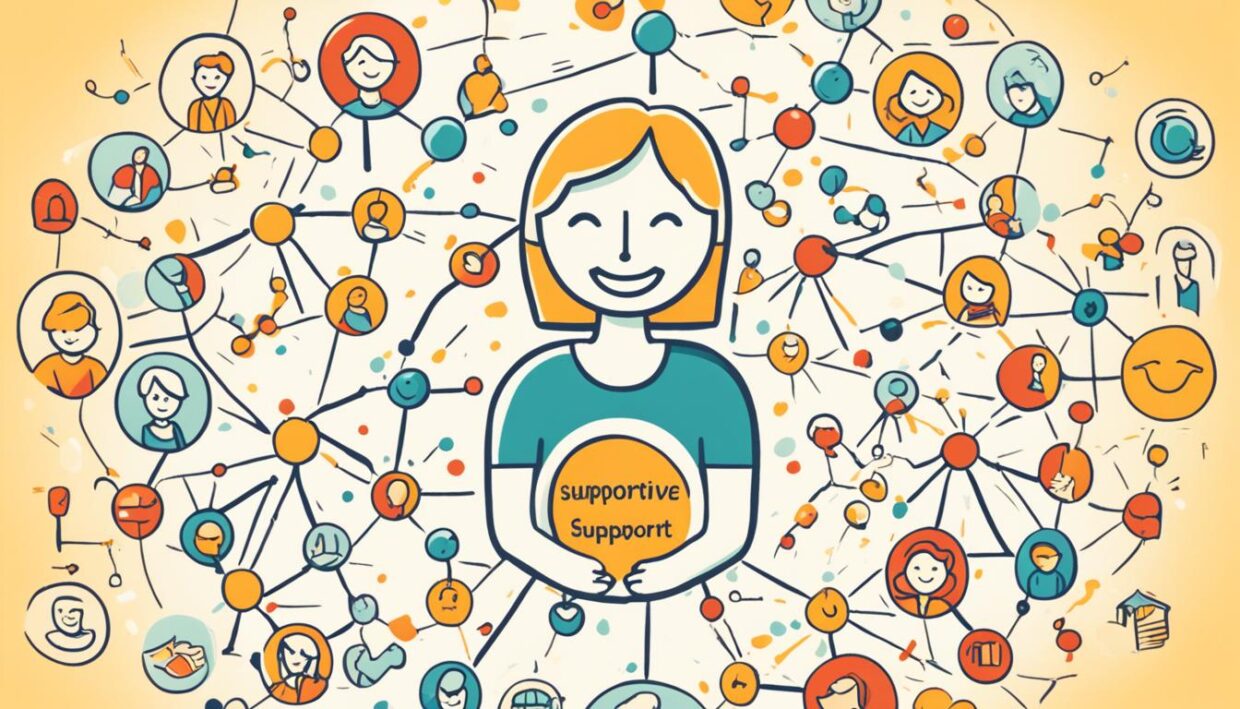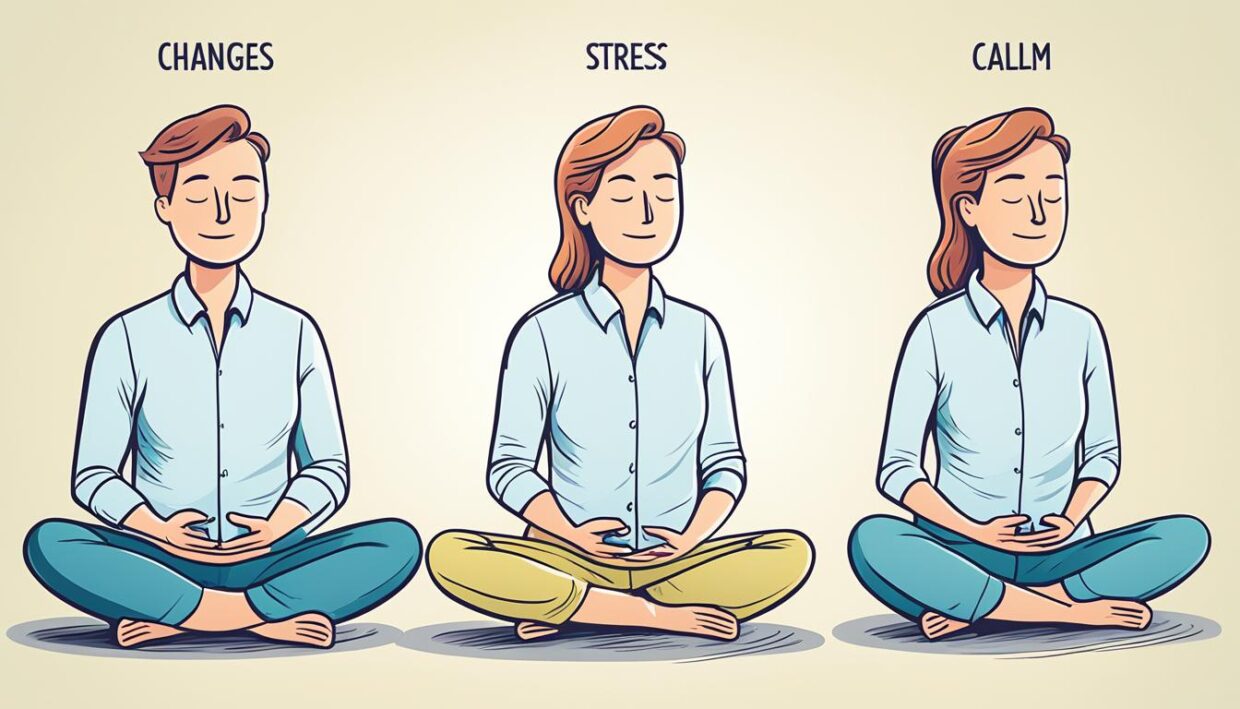
As mental health awareness grows, it becomes increasingly clear that our well-being is as vital as our physical health. As the renowned author and activist Audre Lorde once said, “Caring for myself is not self-indulgence, it is self-preservation, and that is an act of political warfare.” This powerful sentiment underscores the importance of prioritizing mental health in our daily lives. In a world where the hustle often overshadows self-care, understanding that mental health is a crucial component of overall wellness can transform how we navigate our personal and professional worlds.
Many still harbor misconceptions that mental health issues are secondary to physical problems, but the truth is that they are deeply intertwined. Just as chronic physical conditions can provoke symptoms of anxiety and depression, mental illnesses can significantly elevate the risk of lasting physical health issues. By focusing on mental health, individuals can cultivate more fulfilling life experiences, develop resilience, and find balance amidst life’s chaos.
In this guide, we will explore essential aspects of mental health, including coping strategies, the significance of regular self-care, and the role of therapy. Prioritizing mental health isn’t just about identifying and treating disorders; it involves fostering an ongoing commitment to one’s own well-being, which can ultimately lead to improved relationships, career satisfaction, and a richer, more balanced life.
Key Takeaways
- Physical illnesses can lead to mental health concerns like anxiety and depression.
- Mental health prioritization enhances resilience and positive life experiences.
- Setting goals and boundaries is crucial for maintaining life balance.
- Seeking professional help arms individuals with necessary coping skills.
- Advocacy and sharing resources contribute to reducing mental health stigma.
Understanding Mental Health and Its Importance
Mental health encompasses a range of emotional, psychological, and social aspects that influence our thoughts, feelings, and actions. It plays a critical role in determining how we cope with stress, relate to others, and make choices throughout life. The importance of maintaining good mental health cannot be overstated, as studies illustrate its direct impact on overall quality of life and functionality.
A complex interplay of individual, social, and structural factors influences mental health. Adverse circumstances, including economic stress and environmental challenges, heighten the risk of developing mental health conditions. Early experiences can significantly shape an individual’s psychological health, making childhood a crucial period for intervention and support.
Promoting psychological health involves not only addressing mental disorders but also fostering resilience through protective measures. Strong social and emotional skills, education, employment opportunities, and community involvement significantly contribute to mental well-being. Community-based mental health care has emerged as a key component in addressing mental health needs effectively and ensuring better recovery outcomes.
Recognizing mental health as a continuum rather than merely the absence of disorders emphasizes the necessity for proactive measures. Mental health initiatives led by organizations like the WHO highlight the global commitment to improving mental well-being across age groups and communities. By investing in mental health strategies and understanding the multifaceted factors at play, communities can create environments conducive to psychological health.
| Aspect | Importance |
|---|---|
| Individual Factors | Personal history, biology, and genetics contribute to mental health. |
| Social Factors | Relationships and community connections enhance resilience. |
| Environmental Factors | Economics and living conditions can adversely affect mental well-being. |
| Interventions | Community-based programs promote better mental health outcomes. |
| Prevention Strategies | Policies aimed at early intervention can reduce risks and improve mental health. |
The Connection Between Physical and Mental Health
Understanding the link between physical health and mental health is essential for achieving overall well-being. Recent studies have shown a strong mental health connection, emphasizing how closely the body and mind are interdependent. The relationship between these two aspects of health intertwines deeply, influencing each other in various ways.
The Interdependence of Body and Mind
A significant percentage of individuals with chronic illness experience mental health issues. Nearly one in three people with a long-term physical health condition also faces mental health challenges, primarily anxiety and depression. The factors contributing to this interdependence include:
- Genetics that predispose individuals to both physical and mental health issues.
- Low motivation that affects lifestyle choices.
- Difficulties with concentration and planning, making tracking health harder.
- Lack of support to change unhealthy behaviors.
- Increased difficulty in accessing medical help.
Moreover, those suffering from mental health problems tend to neglect routine health checks, which can be critical for early detection of conditions like heart disease. This avoidance can exacerbate both mental and physical ailments, leading to a vicious cycle of declining health.
How Physical Illnesses Can Affect Mental Health
Conversely, the impact of chronic illnesses on mental health cannot be overlooked. Research indicates that individuals grappling with mental health issues are more susceptible to developing preventable physical health conditions. This situation highlights the importance of a holistic approach to health management, particularly for those affected by chronic conditions. Symptoms such as headaches, fatigue, and insomnia are just a few manifestations of how mental distress can physically affect an individual.
Promoting physical activity stands out as a powerful intervention. Exercise releases endorphins, enhancing mood and overall well-being. A balanced diet is also crucial for maintaining optimal mental health, encompassing proteins, fats, and essential nutrients. Addressing unhealthy habits like smoking can significantly improve both mental and physical health outcomes.

| Factor | Impact on Physical Health | Impact on Mental Health |
|---|---|---|
| Chronic Illness | Increased risk of heart disease and other conditions | Higher risk of anxiety and depression |
| Physical Activity | Improved body function and health metrics | Enhanced mood and cognitive clarity |
| Diet | Supports physical recovery and energy levels | Can prevent mental health conditions |
Recognizing and nurturing the connection between physical and mental health is vital for effective health strategies. Individuals must prioritize their physical health to safeguard mental well-being and vice versa, ensuring a comprehensive approach to health management.
Common Mental Health Issues: Anxiety and Depression
Anxiety and depression represent two of the most prevalent mental health issues affecting millions worldwide. Both conditions can come with a range of symptoms that significantly interfere with daily living. Understanding these symptoms is vital for early detection and effective treatment.
Recognizing Symptoms of Anxiety and Depression
Individuals experiencing anxiety often report symptoms such as:
- Persistent worries and feelings of dread
- Increased heart rate and sweating
- Difficulties concentrating or resting
Depression presents a different set of symptoms, which can include:
- Persistent sadness or emptiness
- Fatigue and low energy
- Changes in sleep patterns or appetite
Awareness of these symptoms can lead to a crucial understanding of mental health issues. This understanding can prompt individuals to seek help and pave the way for recovery.
Statistics on Mental Health Disorders in the US
Statistics reveal the widespread nature of these conditions. As of 2019, approximately 1 in 8 people globally were living with a mental disorder, which translates to about 970 million individuals. In the United States, anxiety disorders alone affected around 301 million people, including 58 million children and adolescents. Depression impacted an estimated 280 million individuals, with 23 million of those being children.
The necessity for accessible mental health resources is evident. Alarmingly, only 29% of individuals with psychosis and about one-third of those suffering from depression receive formal mental health care. This statistic underscores the critical need for increased awareness and improved accessibility to mental health treatment options.

Why Self-Care Practices Are Essential
Self-care encompasses a variety of activities and practices that individuals engage in to maintain and enhance their overall well-being. Prioritizing these self-care practices can play a crucial role in supporting mental health. Research shows that consistent self-care activities often lead to increased confidence and creativity, as well as heightened productivity. Individuals can experience more joy and make better decisions, building stronger relationships and communicating more effectively through routine self-care.
Defining Self-Care
Understanding self-care involves recognizing the importance of personal well-being. Effective self-care serves as a defensive measure against mental health issues while promoting resilience. Self-awareness is vital for identifying triggers related to negative emotions and determining personal needs. A gratitude mindset significantly enhances one’s self-care journey and mental wellness. Establishing healthy sleep habits is essential, as sleep deprivation can negatively impact both physical and mental health. Regular exercise correlates with increased serotonin levels, contributing to improved mood and energy.
Popular Self-Care Strategies for Mental Well-Being
Integrating self-care into daily life requires personalizing strategies based on individual preferences. Activities like counseling, journaling, and engaging in hobbies can yield substantial benefits. Individuals often overlook their self-care due to busy schedules, leading to a decline in mental health. Emphasizing the importance of nourishing food, rest, and social connections presents an effective approach to restoring balance in life. Below are some widely recognized wellness strategies for fostering mental well-being:
| Self-Care Practice | Benefits |
|---|---|
| Regular Exercise | Boosts mood through serotonin increase; enhances physical health. |
| Adequate Sleep | Improves overall health; enhances mental clarity and emotional regulation. |
| Mindfulness Practices | Reduces stress and anxiety; enhances self-awareness and emotional resilience. |
| Social Engagement | Strengthens relationships; increases happiness and reduces feelings of isolation. |
| Hobbies and Creative Outlets | Promotes self-expression; fosters joy and relaxation. |
Incorporating these self-care practices can lead to improved mental health outcomes, including enhanced self-esteem and a more positive outlook on life. Individuals should seek to engage in activities that inspire joy and promote well-being to support their mental health. Making self-care a priority enables people to combat stress, anxiety, and depression while boosting concentration and overall happiness.

Coping Mechanisms for Mental Health Resilience
Resilience plays a crucial role in maintaining emotional health, particularly during challenging times. Effective coping mechanisms enable individuals to bounce back from adversity and reduce the likelihood of mental health conditions such as depression and anxiety. By implementing practical strategies, individuals can enhance their resilience and manage stress more effectively.
Effective Coping Strategies
Understanding effective coping strategies can be transformative. Key approaches include:
- Building strong relationships with friends and family provides essential support during tough times.
- Setting realistic goals fosters a sense of accomplishment, promoting overall well-being.
- Engaging in daily activities that bring a sense of success and purpose can uplift emotional health.
- Practicing mindfulness through journaling or yoga helps in expressing emotions and managing stress.
- Acknowledging and reflecting upon one’s thoughts and emotions is vital for healthy thinking.
Building Emotional Resilience
Building emotional resilience takes time and effort. It involves:
- Staying hopeful and actively seeking help when overwhelmed, as reaching out is a sign of strength.
- Maintaining physical health through proper nutrition, sleep, and exercise routines, since stress influences both emotional and physical aspects.
- Learning from past experiences enhances coping strategies and prepares individuals for future challenges.
- Finding areas of gratitude and meaning brings purpose to experiences, even in adversity.

Mindfulness Techniques for Stress Management
Mindfulness has gained recognition as an effective approach to stress management, offering numerous practices that cultivate presence and awareness. This section introduces mindfulness techniques that can bolster mental clarity, reduce stress, and improve overall mental health.
Introduction to Mindfulness
Being mindful involves intentionally focusing on the present moment without judgment. Research highlights that implementing mindfulness techniques can alleviate stress, anxiety, and other mental health concerns. Engaging in structured mindfulness exercises fosters resilience by enhancing the ability to cope with life’s challenges. Studies have shown that practices such as body scan meditation, sitting meditation, and walking meditation nurture present-moment awareness, which is essential for reducing chronic stress and promoting overall well-being.
Mindfulness Practices to Try Today
Here are various mindfulness practices that can be seamlessly integrated into daily routines:
- Mindful Breathing: Concentrate on your breath, ideally for five to ten minutes. Notice the rise and fall of your chest as you inhale and exhale.
- Body Scan Meditation: Lie down in a quiet place and mentally scan your body from head to toe, allowing tension to release gradually.
- Sitting Meditation: Settle into a comfortable position, focusing on your breath while letting thoughts drift without attachment.
- Walking Meditation: Practice strolling slowly while paying close attention to each step, engaging your senses in the environment.
- Mindful Tea Drinking: Savor each sip of tea, focusing on its taste, aroma, and warmth, promoting presence and tranquility.
- Guided Imagery: Use guided sessions, such as Yoga Nidra, to facilitate relaxation and deep internal healing.
- Gazing Meditation: Fixate on an external object to calm the mind and improve concentration.
Incorporating these meditation techniques can foster significant improvements in stress management and enhance mental clarity. Daily practice over a span of six months can help establish a solid routine, yielding long-term benefits for both mental and physical health.

The Role of Therapy in Mental Health Wellness
Therapy plays a crucial role in enhancing mental health wellness, offering various forms tailored to meet individual needs. Engaging in therapy provides a supportive environment where individuals can explore their thoughts, feelings, and behaviors. This process can significantly improve mental health treatment outcomes, enabling patients to develop coping skills and enhance their self-awareness.
Different Forms of Therapy Explained
Several therapeutic approaches cater to a range of mental health concerns. Here are some widely used types of therapy:
- Cognitive-Behavioral Therapy (CBT): This therapy is effective for conditions like depression, anxiety, and bipolar disorder, focusing on changing negative thought patterns.
- Psychodynamic Therapy: This approach helps individuals understand unconscious emotions and how they affect behavior.
- Interpersonal Therapy: This therapy emphasizes improving relationships and emotional expression.
- Family Therapy: Aims to improve communication and problem-solving within families.
- Group Therapy: Involves a small group working collaboratively on shared issues under professional guidance.
Therapy often involves weekly sessions lasting around 50 minutes, depending on personal circumstances and insurance coverage. The partnership between the patient and therapist significantly impacts the effectiveness of the therapy process. Active participation and open communication are vital for achieving therapeutic goals.
Benefits of Seeking Professional Help
Many adults face mental health challenges, with nearly 20 percent living with some form of mental illness. Seeking professional help through therapy can yield numerous benefits:
| Benefit | Description |
|---|---|
| Improved Relationships | Therapy can foster stronger interpersonal connections by enhancing communication skills. |
| Coping Skills | Patients develop strategies for managing stress, anxiety, and depressive symptoms. |
| Self-Awareness | Therapy promotes better understanding of personal thoughts and behaviors. |
| Long-Term Benefits | Short-term therapy approaches can lead to enduring improvements in mental health. |
Therapists possess varied training levels, allowing them to address a range of issues from addiction to grief and self-esteem. The effectiveness of therapy is further enhanced when patients take the insights gained from sessions and apply them to their daily lives. In cases where progress stalls, it’s crucial for patients to discuss their concerns with their therapist and explore possible adjustments to treatment.

Building a Support System for Mental Health
A robust support system plays a vital role in maintaining mental health, especially during challenging times. Connecting with trusted friends, family, or support groups can significantly improve overall well-being. Studies indicate that individuals with emotional support report lower stress levels; those with such systems had an average stress level of 5 out of 10, compared to 6.3 out of 10 for those lacking support.
Different components of a support system include family, friends, colleagues, and acquaintances. These relationships often provide unique perspectives, enhancing understanding of various issues. Social connections can consist of one to ten individuals, each offering diverse forms of peer support that contribute positively to mental health. Individuals in vulnerable moments, such as new parents or those relocating, may find it beneficial to expand their network.
Engagement in the community enhances opportunities for social interactions, which helps combat feelings of isolation. Utilizing social media and online groups can facilitate connections, allowing individuals to tap into larger communities focused on mental health support. Participation in such platforms fosters a sense of belonging, an essential aspect of Maslow’s hierarchy of needs.
Building a support system takes time and effort. Nurturing these connections leads to personal satisfaction, improved self-esteem, and resilience. Additionally, social support has been shown to reduce risks associated with physical and mental health issues, such as anxiety and depression. As relationships evolve, continuously evaluating the quality of support received becomes crucial.

Setting Healthy Boundaries for Well-Being
Establishing healthy boundaries is a vital component of nurturing mental health. Boundaries dictate how individuals interact with others and define their personal space, influencing relationships and overall well-being. By ensuring that boundaries are respected, people can experience significant reductions in stress and anxiety, ultimately leading to better life satisfaction.
Understanding the Importance of Boundaries
Many people struggle with boundary setting, often stemming from the belief that saying no is unacceptable. This mindset can lead to unhealthy dynamics where individuals feel overwhelmed by the emotions and responsibilities of others. Healthy boundaries are crucial for protecting personal space, boosting self-esteem, and enhancing mental well-being. They play a fundamental role in combating anxiety and stress, as taking responsibility for someone else’s feelings can be emotionally draining.
Tips for Creating Boundaries
Implementing clear boundaries may initially demand considerable effort but, over time, can transform into instinctive practices. Here are several key strategies for effective boundary setting:
- Recognize Your Limits: Understanding personal thresholds is essential to identifying where boundaries need to be established.
- Communicate Clearly: Express needs and preferences utilizing “I Statements” to promote understanding without offending.
- Practice Saying No: Prioritize self-care by respectfully declining requests that encroach upon personal space and time.
- Be Consistent: Maintain boundaries once set. Inconsistency can lead to confusion and resentment.
- Review and Adjust: Regularly assess boundaries to ensure they align with personal goals and changing circumstances.
Implementing these tips will enhance not only personal growth but also foster healthier relationships. As individuals continue to set and maintain healthy boundaries, they will likely find themselves more at ease with their decisions and the company they keep, leading to improved overall well-being.

| Boundary Aspect | Impact on Well-Being |
|---|---|
| Clear Communication | Boosts self-esteem and establishes stronger relationships |
| Respecting Personal Limits | Reduces stress and encourages a healthy environment |
| Practicing Self-Care | Improves mental health and enhances resilience |
| Consistency in Boundaries | Fosters trust and increases emotional safety |
Resources and Tools for Mental Health Support
Accessing the right mental health resources can significantly impact well-being. With an array of counseling services, therapy options, and online support platforms available, individuals can find the help they need. This section highlights various resources dedicated to mental health assistance and advocacy.
Available Counseling and Therapy Options
Various avenues exist for those seeking counseling or therapy. Many professionals offer services both virtually and in person, tailored to individual needs. Key resources include:
- Substance Abuse and Mental Health Services Administration (SAMHSA): Provides tools for locating mental health services providers.
- Centers for Medicare & Medicaid Services (CMS): Offers information on covered mental health services.
- U.S. Department of Veterans Affairs (VA): Features an online tool for locating VA providers.
- Local Resources: State and county websites often provide details on available health services.
- Employee Assistance Programs (EAPs): Many employers provide programs to assist with mental health issues.
- Colleges and Universities: Often offer mental health services through health centers or peer support groups.
Online Resources for Mental Health Awareness
The internet offers a wealth of online support tailored for mental health advocacy and awareness. Some notable platforms include:
- National Institute of Mental Health: Delivers prevalence data on mental illnesses across demographics.
- American Foundation for Suicide Prevention: Provides insights on prevention strategies and survivor support.
- National Eating Disorders Association: Offers resources for recovery from eating disorders.
- Mental Health America: Features screening tools for various mental health issues.
- Anxiety and Depression Association of America: Emphasizes early diagnosis and treatment resources.

Utilizing these mental health resources can facilitate better understanding and management of mental health conditions, encouraging proactive steps toward well-being.
| Resource | Type of Support | Website/Finding Tool |
|---|---|---|
| SAMHSA | Counseling Services Locator | www.samhsa.gov |
| VA | Veteran Provider Locator | www.va.gov |
| NIMH | Research and Statistics | www.nimh.nih.gov |
| EAPs | Employee Support Services | Varies by employer |
| MHA | Screening Tools | www.mhanational.org |
Creating a Balanced Lifestyle for Mental Health
A balanced lifestyle is essential for maintaining mental health, intertwining diet, exercise, and time management. A holistic approach enhances overall well-being, allowing individuals to thrive emotionally and physically. Understanding how nutrition and physical activity contribute to mental wellness is key. Furthermore, effective time management techniques will assist individuals in prioritizing tasks, creating schedules that promote harmony in their lives.
Importance of Diet and Exercise
Nutrition significantly impacts mental well-being. A healthy diet rich in fruits, vegetables, whole grains, and lean proteins nourishes the body and brain. Such a balanced lifestyle can enhance mood, reduce anxiety, and lower the risk of depression. Physical activity complements these dietary habits, serving as a powerful tool in improving mental health. Regular exercise has been shown to:
- Boost mood and reduce anxiety
- Improve sleep quality
- Enhance cognitive function
- Provide stress relief and increase energy levels
Incorporating a variety of exercises, including strength training exercises at least twice a week, is essential. Even short bursts of activity—such as a 10-minute brisk walk—can enhance mental alertness and overall positivity.
Time Management Techniques for Better Balance
Effective time management plays a crucial role in maintaining a balanced lifestyle. Strategies that help individuals manage their time successfully include:
- Setting clear priorities: Identify which tasks are most important and tackle those first.
- Creating daily schedules: Allocate specific times for work, exercise, and relaxation.
- Breaking tasks into smaller steps: This prevents overwhelm and promotes the feeling of accomplishment.
- Building in time for self-care: Ensure there are dedicated moments for activities that nourish your mental health.
By skillfully managing time, individuals can cultivate environments that support their mental health journeys. Regularly engaging in physical activities, even slight adjustments to daily routines—like opting for healthier meal choices or taking quick outdoor strolls—can yield positive effects on overall well-being.

| Exercise Duration | Mental Health Benefits |
|---|---|
| 10 minutes | Increased alertness and positive mood |
| 30 minutes per week | Improvement in mood, anxiety, and depression |
| 1-2 hours per week | Reduced risk of depression |
Empowering Yourself: Advocacy for Mental Health
Engaging in mental health advocacy serves as a powerful means to empower individuals and communities. By fostering open conversations about mental health, we can contribute to reducing stigma and increasing awareness. This section delves into the ways one can normalize discussions around mental health and mobilize support for initiatives aimed at enhancing mental well-being.
Normalizing Mental Health Conversations
Creating a culture that embraces mental health conversations is vital. Many individuals with diagnosable mental health conditions remain untreated; statistics indicate that only 44% of those in need receive the necessary counseling. By openly discussing mental health issues, we encourage those who are struggling to seek help. Incorporating mental health topics in schools, workplaces, and community gatherings increases awareness and facilitates growth.
Mobilizing Support for Mental Health Initiatives
Active participation in mental health initiatives can profoundly impact communities. Collaborating with local organizations helps promote awareness and support for those affected by mental illness. Resources such as workshops and informational campaigns aim to reach a wider audience, addressing the fact that 1 in 5 adults in the U.S. experiences a mental health crisis annually. By organizing events, fundraisers, and informative sessions, advocates can raise funds and awareness for treatment options and support services.

Understanding and Combating Mental Health Stigma
Mental health stigma remains a significant barrier to individuals seeking necessary support. This stigma arises from misconceptions that label those dealing with mental health issues as weak or untrustworthy. Such perceptions can lead to delayed treatment and increased morbidity in psychiatric care.
Awareness of the harmful effects of stigma can promote a more supportive environment for those in need of help. Educating the public about the reality of mental illness is crucial. Many individuals avoid mental health services due to fear of judgment or perceived discrimination. This avoidance exacerbates symptoms, worsens conditions, and diminishes overall functionality.
Statistics reveal that over half of people with mental illnesses do not receive help for their disorders. A 2022 poll showed that only 3-5% of employees utilize Employee Assistance Programs (EAP), pointing to a lack of trust and safety in discussing these issues in workplaces. Furthermore, perceptions of stigma intersect with gender, race, and socio-economic status, further marginalizing vulnerable populations.
- Stigma leads to social isolation and discrimination, affecting relationships and employment opportunities.
- Internalized stigma can lower quality of life and diminish self-esteem.
- Delays in seeking treatment can result in reduced access to important resources.
Tools like the ISMI scale and the Perceived Devaluation-Discrimination Scale can help measure stigma’s impact on mental health. Addressing stigma through education and awareness campaigns is vital to foster trustful, therapeutic relationships between healthcare providers and patients.

Incorporating Mindfulness into Daily Life
Integrating mindfulness into daily routines has become essential for many seeking to enhance their well-being. Daily mindfulness practices can serve as a powerful tool for stress management and improving mental health. Starting with simple mindfulness exercises can make a significant difference in how individuals approach each day, promoting a sense of peace and focus.
Simple Mindfulness Exercises to Start Your Day
Beginning the day with intentional mindfulness exercises can set a positive tone. Here are a few effective methods:
- Deep Breathing: Take a few minutes to focus solely on your breath. Inhale deeply through the nose, hold for a moment, and exhale slowly through the mouth. This simple act of deep breathing can reduce stress and increase calmness.
- Mindful Walking: Take a short walk while paying attention to each step. Notice the texture of the ground beneath your feet, the rhythm of your breath, and the sensations in your body.
- Gratitude Journaling: Spend a few minutes writing down three things you are grateful for each morning. This practice encourages positivity and mindfulness in daily life.
Mindfulness in Stressful Situations
Being present during challenging moments is crucial for effective stress management. Implementing mindfulness can help combat anxiety and foster resilience. Here are strategies for cultivating mindfulness in stressful situations:
- Pause and Breathe: When feeling overwhelmed, take a moment to pause. Focus on your breath and ground yourself in the present moment.
- Single-tasking: Focus on one task at a time. This approach enhances concentration and effectiveness, reducing feelings of being overwhelmed.
- Mindful Listening: In conversations, practice active listening without distraction. This can improve relationships and cultivate a deeper understanding of others.
Incorporating mindfulness consistently into your lifestyle can yield profound benefits. As mindfulness can effectively address stress, anxiety, and improve overall mental wellness, it’s important to celebrate small milestones. Progress in mindfulness is a journey, encouraging individuals to share experiences and insights with others.

| Mindfulness Exercise | Benefits |
|---|---|
| Deep Breathing | Reduces anxiety and promotes calm |
| Mindful Walking | Enhances awareness and connection to surroundings |
| Gratitude Journaling | Increases positivity and mental clarity |
| Single-tasking | Improves focus and effectiveness |
| Mindful Listening | Strengthens relationships and understanding |
Conclusion
Throughout this wellness guide, we have explored the multifaceted significance of mental health and the various strategies that can help individuals prioritize their well-being. From understanding the connection between physical health and mental wellness to incorporating self-care practices and building robust support systems, each aspect is essential for fostering mental resilience. Equally important is recognizing that mental health is a continuous journey, requiring persistent attention and advocacy.
This recap has highlighted that particularly in the United States, mental health conditions affect millions, with one in five adults experiencing a mental illness. Early interventions targeting children and adolescents can make a substantial difference in managing mental disorders, yet a focus on long-term support and comprehensive outcomes beyond mere symptom improvement is crucial for sustained effectiveness. It’s evident that taking proactive steps towards mental health can improve not only individual lives but also enhance our communities.
As you reflect on the insights gained from this article, remember that prioritizing your mental health is an ongoing endeavor. By implementing the strategies discussed and seeking out available resources, you can take significant strides toward achieving a balanced and fulfilling life. Embrace the journey of mental well-being and encourage those around you to do the same.




















Be the first to leave a comment